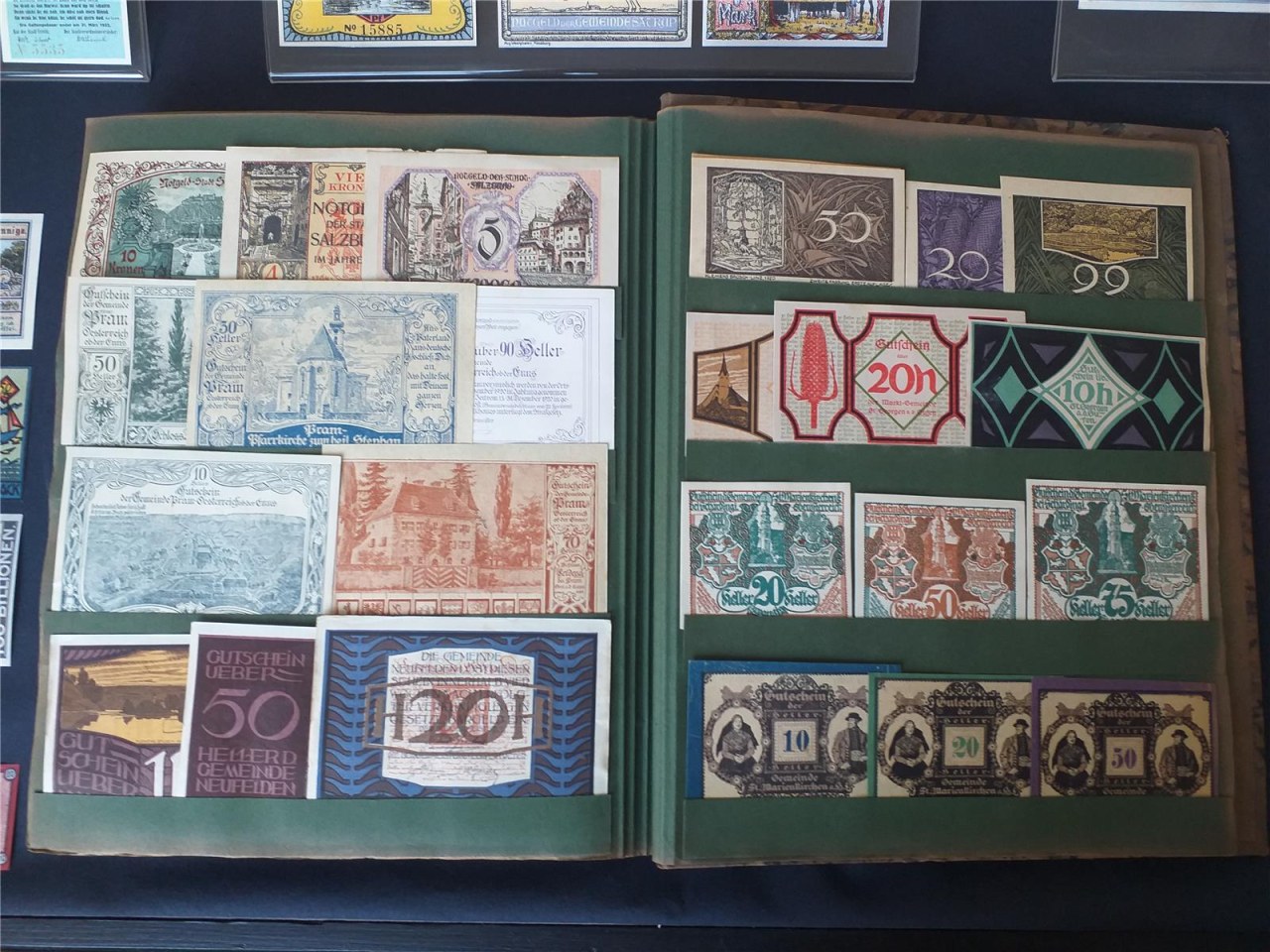Album of Emergency Banknotes
› Detail › Album of Emergency BanknotesExhibit of the Month 11 / 2021
The period album of so-called emergency banknotes from a private collector contains banknotes from various regions of Germany and partially also Austria. The banknotes are mainly from the years 1918 - 1921.
Germany - Emergency Banknotes 1914 - 1923
Due to the need to finance high wartime expenditures, the German government, along with the Reichsbank, adopted a series of measures at the beginning of the war to help cover them. One of these measures was the abolition of the convertibility of banknotes into gold, which further contributed to speculative hoarding of coins (removal from circulation). Gold and silver coins were withdrawn from circulation and replaced mainly by paper currency and coins made of various metals.
The hoarding of coins caused a shortage of lower denomination currency. The shortage of coins was so great that there were instances of tearing or cutting paper banknotes, and often there was a shift to barter. As a consequence of the situation, emergency currency began to circulate in large numbers in 1914 and 1915. Emergency banknotes were issued by savings banks, municipalities, and manufacturing enterprises. In addition to paper, emergency banknotes were also printed on leather, canvas, silk, or jute. Some banknotes were printed only on one side.
The fact that banknotes had full purchasing power only in the locality where they were issued was exploited for speculation. Victims of this speculation included, for example, people who were merely passing through a given area or city. When paying with valid banknotes issued by the Reichsbank, they received local emergency currency in return. A large number of demobilized soldiers returning home by military transport became victims of these practices.
In the period following the end of World War I, when there was a gradual acceleration of inflation, an increasing number of different types of currency began to circulate. At the peak of hyperinflation (autumn 1923), there were nearly two thousand different types of emergency currency in circulation. Some of this currency was issued by authorized issuers, but most was issued illegally. In the autumn of 1923, the nominal value of unauthorized banknotes amounted to 400 - 500 trillion marks (400,000,000,000,000,000,000).
Emergency banknotes became sought after among collectors after their introduction into circulation. Cities, and even villages, gained additional income from issuing banknotes, which were sold for a higher than established nominal value to collectors.
Banknotes are an interesting source for studying the cultural, political, and social situation of the time due to their themes. Banknotes often contain comments or themes related to inflation or nationalist motives. They also frequently refer to local history, fairy tales, and legends.
While initially emergency banknotes were of low denominations, later, especially in 1923, banknotes with nominal values in the millions to trillions of marks began to circulate.
The emergency banknote with the highest nominal value issued into circulation was released on November 10, 1923, by the city of Düsseldorf. Its nominal value was 100 trillion marks (100,000,000,000,000).
Text: Ing. et Bc. Ludvík Lejsek
 en
en cs
cs de
de

